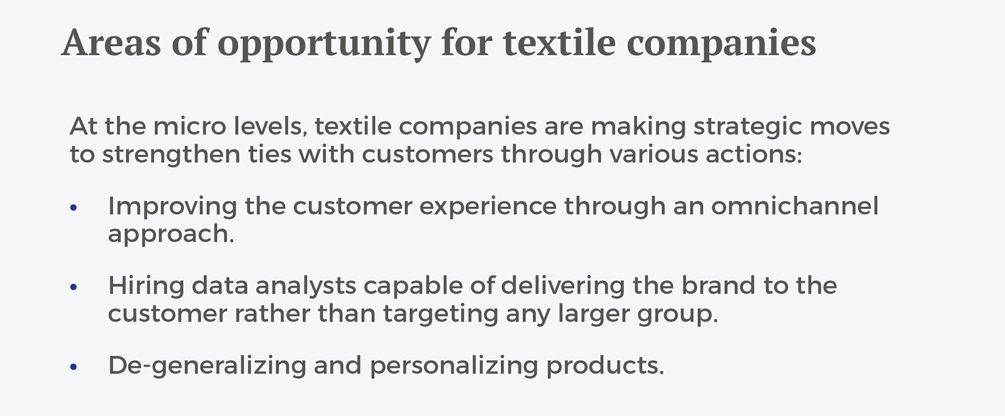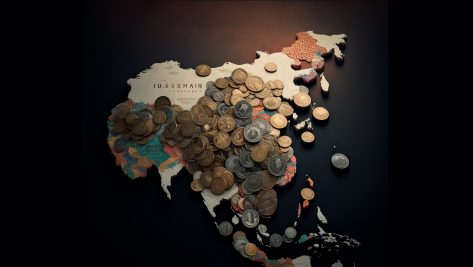The first years of the most recent global economic crisis gave a definitive boost to the globalization and internationalization of the vast distribution sector. Major brands adopted an omnichannel approach to their operations that made it easier for them to complete their purchasing and sales processes anywhere in the world. In the textile industry, this advance was especially notable.
Textiles have historically been a driver of social development, much like mining, fishing, and agriculture were in their heyday. The textile trade has likewise contributed to the growth of the middle class and petite bourgeoisie in developing societies, although the pace of these changes varies by region as a function of demographic factors such as mass migration from the countryside to cities. The strategic importance of this sector is apparent from the fact that tariffs on textiles are well above the global average.
Impacts of globalization
Nowadays, fashion moves all over the globe. Countries once viewed as developing economies are now attractive sites for stores and production centers. GDP has evolved worldwide, with growth tripling over the past three decades in the poorest regions of the planet. Thanks to free trade, the European Union has emerged as the clear leader of the import and export markets. With a global market share of more than 32%, the continent outpaces both the United States and China in the importation and exportation of goods and services. On the employment front, globalization has also created more than 30 million jobs in Europe over the past 25 years.
Europe comes out winning, but so do regions with fewer resources. Measures established by the continent have enabled other countries to export their products in exchange for guarantees of human-rights protections, compliance with international labor laws, etc. This policy is implemented through the Generalized System of Preferences (GSP+). The objective of internationalization—beyond safeguarding the European Union’s economic interests—is to guarantee sustainable development of the global environment and respect for human rights by encouraging the democratization of developing countries.
If these conditions are not met, certain players can be excluded from the export scene. An example is the case of Sri Lanka, whose government was accused of war crimes and human-rights violations in its military offensive against the Tamil rebels. Such examples demonstrate that any firm wishing to establish itself in a particular country must study geopolitics and socioeconomics, since decisions in these realms can favor—or harm—the company’s position and competitiveness in the market.
The objective of internationalization—beyond safeguarding the European Union’s economic interests—is to guarantee sustainable development of the global environment and respect for human rights by encouraging the democratization of developing countries.
Brand before product
Another competitive advantage arises from brands themselves. In the 1980s, major franchises (especially Italian and French ones) began establishing themselves all over the world, buoyed by the status of their brands. This expansion proceeded despite the neglect of various fundamental aspects: brand control in networks of small franchise-holders, customer experience, logistics systems, etc. Nevertheless, brands have proven themselves to be the true paradigm of exportation, since they travel faster in consumers’ minds than products can. Without differentiation, a firm can only compete in costs or price.
Under this perception, a brand is a guarantee for investors and customers who are looking for answers on the market—an ironclad bond for stakeholder confidence. The values promoted by brands are highly influential in many societies. Regardless of the impact of digitalization and the challenges that lie ahead, the meaning of a brand must be constant. Unwavering consistency in this regard is an essential virtue, as is a steadfast commitment to sustainability.
Integrated sustainability
In addition to fostering a commitment to customers, the retail and textile industries must also focus on developing sustainable exportation models. All organizations should view sustainability not as a mere accessory but as a key part of their value proposition. This is true in all areas, but especially in the most profitable sector of the fashion business: luxury. This sector must incorporate sustainability—nowadays an expensive but aspirational concept—into its differentiation strategy, in contrast to the notion of ostentatious luxury. Through processes that make sustainable products more affordable, it could once again become possible to change the rules of the game and develop new products and consumer goods unlike those currently available.
Social demand is ultimately being channeled towards new processes labeled sustainable. Measures such as using environmentally friendly energy sources and reusing, recycling, or repurposing production elements are not only aligned with consumer demands but also present business opportunities.
Let us return to the question of Europe’s leadership in matters of internationalization. With many European brands leading the global sales rankings, the current challenge—in terms of the competitiveness of retail and fashion—is to stake out a position that firmly combines development and sustainability with certain open measures for free trade.

© IE Insights.











